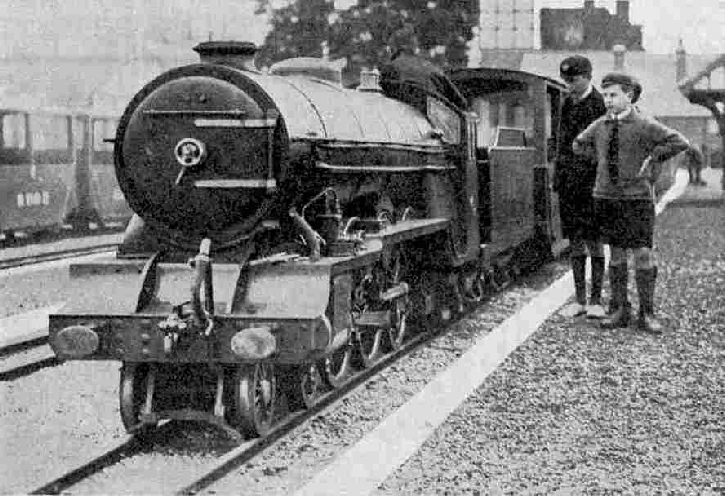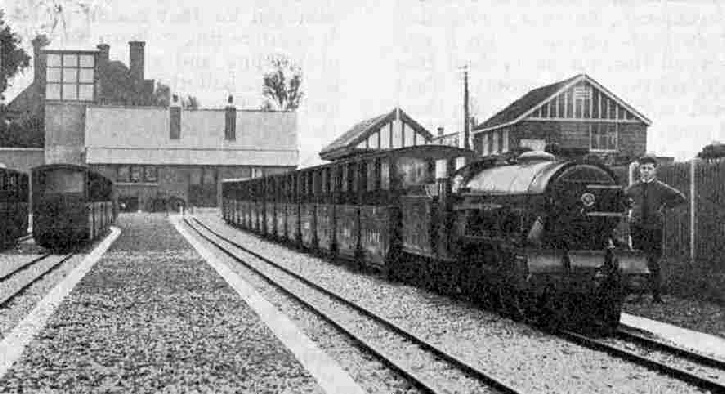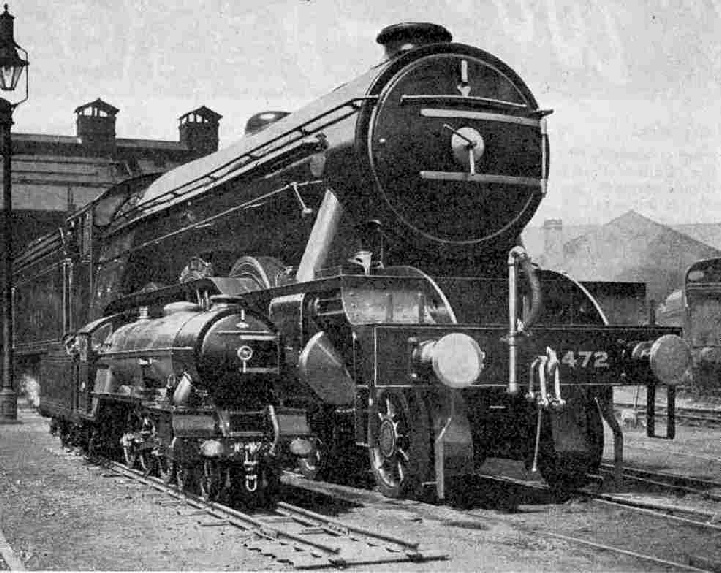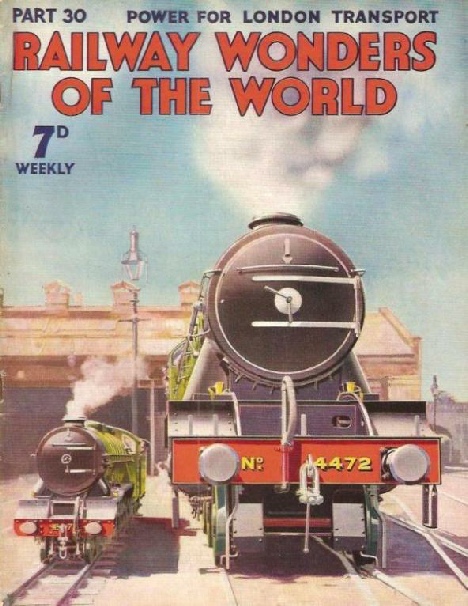
© Railway Wonders of the World 2012-


A New Miniature Railway
Famous Motorist’s Life Ambition Realised

On the way to Dymchurch. The top of the cab on the loco has been removed in this photograph.
NEARLY every boy feels at some stage in his early days that the crowning experience of his life would be that of donning overalls and taking charge of a really big locomotive, but few ever realise that ambition. Nearly 40 years ago was born a boy whose ambition went beyond this, for he resolved that one day he would actually control a real railway. That bold ambition was realised on 28th May last when there was completed the final stretch of the fascinating 15-
The boy referred to is Captain J. E. P. Howey, who has formed an incorporated company under the Light Railways Act. He is the principal shareholder and is taking the leading part both in the construction and operation of the line. Capt. Howey is well known in motoring circles at Brooklands and other racing tracks and owns several famous cars.
The engineer and manager of the line is Mr. Henry Greenly, A.I.Loco. E., the famous designer of miniature locomotives, who has had a unique experience in every phase of miniature railway work.
The Romney, Hythe and Dymchurch Railway serves a district that for the past 40 years has desired a railway. The development has been promised time and time again, and when Captain Howey’s scheme was mooted the populace almost to a man voted for it. Some 20 years ago the Southern Railway applied for powers to establish a similar scheme in this area, but this was to have been a standard gauge line with a single track at an estimated cost of £60,000. It was practically impossible for the district then to justify the expenditure of so large a sum and for that reason nothing came of the project. It is interesting to learn that the approximate total cost of building and equipping the new railway is rather less than half that of the Southern Railway’s scheme, and that Sir Herbert Walker, the general manager of the Southern Railway, has given a considerable amount of practical support to Captain Howey in the development of the line.
A small gauge line, Captain Howey contends, is the ideal feeder scheme for country districts that could not economically support the standard gauge. The Romney, Hvthe and Dymchurch line is in the midst of a popular holiday district, Hythe itself being wonderfully situated, with natural amenities equal to those of many considerably more famous seaside resorts. Dymchurch, hitherto practically isolated, has wonderful sands, while New Romney is an ancient medieval borough close to which is Dungeness, a name with which every toy is familiar. All these places are linked by the little R. H. & D. Railway.
The Romney Marsh is an interesting stretch of country, being land reclaimed from the sea. Its nominal level is low, but there is an excellent drainage system, and at no point will the line be at all waterlogged. The adoption of a small gauge has allowed roads to be tunnelled successfully, for a cutting can go down to 5 ft 6-

Inspecting the Locomotive at Romney Terminus.
Several main drainage canals and innumerable dykes have had to be crossed in the course of the 8¼ miles track, the largest of these being that adjacent to the Duke of York’s Camp at Jesson. This bridge is a single span skew “N” type girder bridge 56 ft in length, raised on reinforced concrete abutments. The road bridge at The Warren, New Romney, has two tunnels, each 50 ft in length, and was built in reinforced concrete in 5½ weeks.
As already mentioned the gauge of the line is 15-
The Eskdale line abounds in steep gradients and sharp curves, and the principal goods traffic consists of stone quarried from the hills. It was in front of a 34-
The mechanism of “Green Goddess” is designed specially to meet the requirements of miniature railway work, and a very high degree of efficiency is obtained, the coal and water consumption being truly proportionate to the work done. The promoters of the R. H. & D. Railway believed that the miniature scheme could show a better performance than that achieved by the orthodox small gauge engine, and to prove their theory they purchased from the stock designs of an old-
From these beginnings the scale of 1/3rd (4-

The train standing in Romney Station.
The engines to be used on the R. H. and D. line will be eight in number and will be equipped with piston valves, superheaters, automatic vacuum brakes, pop safety valves, Wootten fireboxes, bogie tenders and every convenience that an engine driver could desire. All are miniatures of main-
Semi-
In the course of the 8¼ miles of the line there will be five stations and halts. In the layout of these stations the organisers have anticipated maximum requirements in order that the efficiency of the line may not be impaired in the future.
The stations are as follows:-
New Romney (the main terminus) with four passenger roads, locomotive and works buildings, turntable, a carriage shed and an extensive goods yard. The Southern Railway have extended their line into this yard for purposes of goods transfer.
Holiday Camp near Jesson Farm and adjacent to Messrs. Allnatt’s famous children’s holiday-
Dymchurch (Marshlands), adjacent to the St. Mary’s and Bennington Roads and to the Marshlands Hotel near to the western end of this charming seaside resort. The R. H. and D. Railway thus brings Dymchurch into direct communication with London, and will enhance the popularity of its beautiful stretch of sand,
Dymchurch (Dymchurch Bay and Burmarsh). A halt on the eastern end of Dymchurch on the road to Burmarsh village. From here the line passes under the shadow of Lympne Castle close to the hills under the West Hythe Road to Hythe alongside the southern bank of the Military Canal.
Hythe (Ashford Road). This terminus is close to H.M. School of Musketry and near to the Folkestone omnibus terminus.
It is of interest to note here that the whole of the work of construction, including the permanent way and works buildings, bridges, locomotives, carriages, wagons, and equipment generally, has been carried out to the company’s designs.
The directors of the R. H.and D. Railway think that their present proposals offer a reasonable chance of success, and that as the East Kent coast is a popular holiday centre, there will be sufficient summer traffic to allow the service to be continued during the winter. What they lose on the roundabouts will be made up on the swings! Therefore, in all probability, the inhabitants of the Marsh will be blessed with a service all the year round.

Dignity and Impudence! 3-
You can read more about
“Model Loco Trials at Eskdale” and “Railway Curiosities”
on this website.
A similar view to “Dignity and Impudence!” appeared as the cover illustration to Part 30 of Railway Wonders of the World
